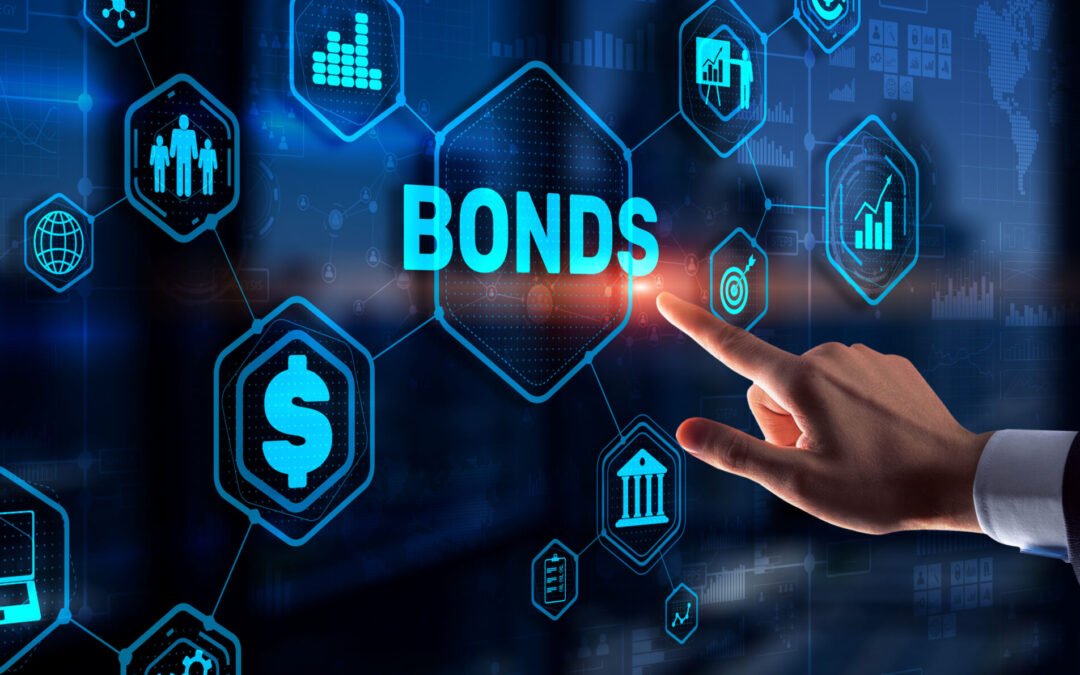If you’re looking for income, I’m your guy.
I won’t shy away from sharing my opinion on a good (or bad) dividend-paying stock.
But what about bonds? They look better than they have in years as the Federal Reserve tries to corral inflation before it runs out of control.
Well, I’m not shy on that front either.
Today’s Investing With Charles tells you everything you need to know — benefits, risks and alternatives — about bonds.
Check out more in my conversation with Research Analyst Matt Clark.
Watch our entire conversation above or keep reading for the highlights.
What Is a Bond?
Matt: We just kind of freelanced this topic ourselves, and I just want to start off with the basics. First off, what is a bond?
Charles: A bond is essentially an IOU.
It is a debt instrument issued by a government, a company or perhaps a municipality. Some entity issues an IOU, and it pays interest on that, semiannually in most cases.
Let’s say you pay $1,000 for a bond and you receive interest payments twice a year. At the end of that bond’s life, you get the face value of it back. If it’s $1,000 you get that back. It’s $10,000, you get $10,000 back. Whatever that face value is, you get that back at the end of the bond’s life.
Bonds can range anywhere from a couple days to maturity to even 30 years, or in some cases even longer. There are rare instances of 100-year bonds.
Matt: Really?
Charles: That’s enthusiastic about my health that I expect to cash in on a 100-year one, but they do exist.
Why Should You Buy Bonds?
Matt: Another question to kind of lead into is: What’s the point? Why buy a bond?
Charles: What’s the point? There are two reasons.
The first is the income is predictable. If you want income, bonds are the most traditional income instrument. So, that’s simple income.
Beyond that, bonds do have the additional benefit of being minimally correlated to stocks.
This year is sort of an exception, but most of the time, stock prices and bond prices move in different directions.
If your stock portfolio hits some speed bumps, your bonds are doing well.
They offer diversification. They reduce the overall volatility of your portfolio.
There Are Risks
Matt: But there are risks. What are those?
Charles: I want to start with this caveat. The U.S. government is not going to default. If the U.S. government defaults, then we have bigger problems than our bond portfolios, right?
But with anything that’s not a U.S. government bond, there is always a risk of default. There is the risk that the borrower just doesn’t pay.
If you buy high-quality bonds, that’s a pretty minimal risk. Unless you’re buying junk bonds, that’s not something you have to worry about too much.
Now, the worry that you do have… We all have this worry, particularly for longer-term bonds…
Inflation.
Those interest payments you get every six months don’t change. They’re the same today as they’re going to be 30 years from now. They don’t keep pace with inflation.
Beyond that, you will get the face value of the bond back one day. Let’s say you buy the bond at par… You buy it for $1,000 today, and you get that $1000 back in 30 years.
Well, in 30 years, that $1000 isn’t going to go as far.
So that’s your biggest risk. That one word: inflation.
Bond-Like Alternatives
Matt: Now, without getting into too much detail, because next week we’ll talk about stocks versus bonds for income, what are some better alternatives to bonds that you can use for that semiannual income stream?
Charles: There’s not a perfect substitute that offers the same combination of income and portfolio stability. It’s hard to mimic that. But really a better alternative for most investors most of the time is going to be a dividend-paying stock.
If you buy a good, safe dividend payer with a long history of payouts, then you’re going to have a better opportunity to keep pace with inflation because most healthy companies raise their dividends over time.
So that income stream grows every year or every couple of years. You don’t get that with the bond.
Furthermore, stocks don’t have a terminal value.
You can sell a stock next year, or you can sell it in 30 years at a higher price. Or at least that’s the hope!
Assuming we’re not in the middle of a bear market, you should make money over time as the company grows.
You don’t get that with bonds.
What kind of dividend stocks are the most bond-like?
Focus on dividend payers that are also low volatility using our Stock Power Ratings system.
If you focus on companies that have a high volatility rating within our system, which means they are less volatile, you can recreate a lot of that volatility reduction you get with bonds.
It’s not a perfect substitute, but all things considered, I consider it better for most investors that are looking at bonds.
Matt: I see. Next week, we’re going to dive a little bit more into stocks versus bonds as income investments. If you have a question about stocks, income or anything else, submit that to us by emailing Feedback@MoneyandMarkets.com.
Where to Find Us
Coming up this week, Matt will have more on his latest episode of The Stock Power Podcast, so stay tuned.

Don’t forget to check out our Ask Adam Anything video series, where Chief Investment Strategist Adam O’Dell answers your questions.
You can also catch Matt every week on his Marijuana Market Update. If you are into cannabis investing, you don’t want to miss his weekly insights.
Remember, you can email my team and me at Feedback@MoneyandMarkets.com — or leave a comment on YouTube. We love to hear from you! We may even feature your question or comment in a future edition of Investing With Charles.
To safe profits,
Charles Sizemore, Co-Editor, Green Zone Fortunes
Charles Sizemore is the co-editor of Green Zone Fortunes and specializes in income and retirement topics. He is also a frequent guest on CNBC, Bloomberg and Fox Business.






